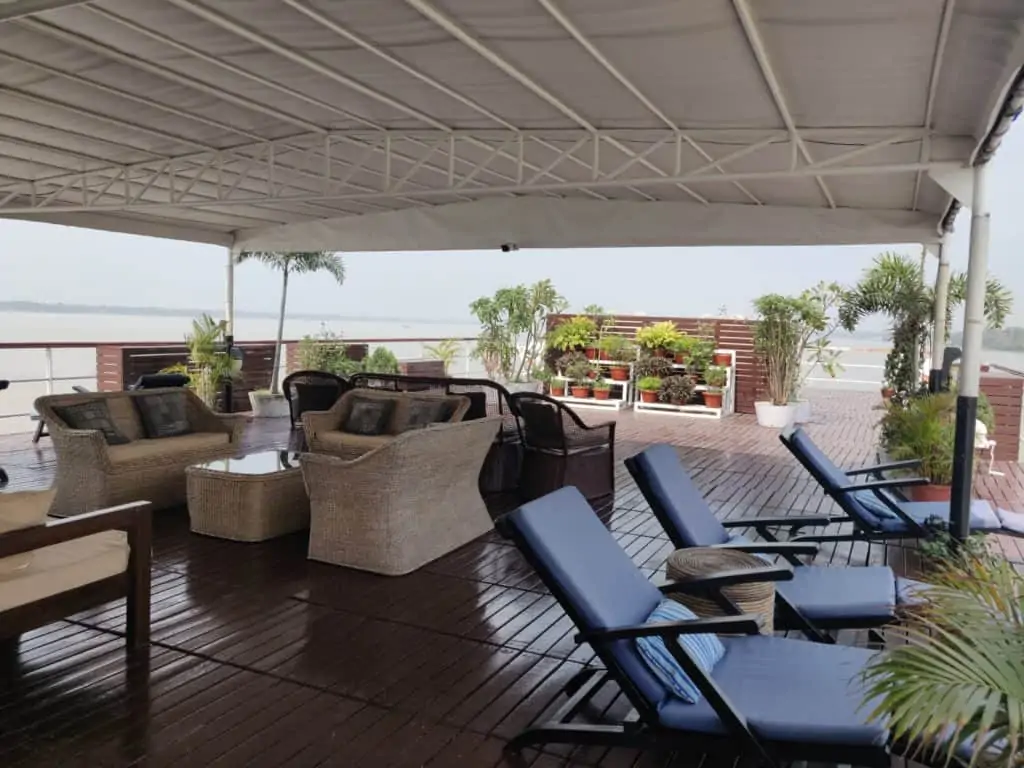
This account of a river cruise to the Sunderbans, West Bengal in February 2020 by our guest Arvind Palaniappan is so nostalgic about a time when terms like pandemic, new normal or cyclone Amphan were not a part of our vocabulary. As I read on its hard to believe we had done this trip just three months ago.
” As I sit in the calm surroundings of our Eagleton home having survived the lockdown, I am fortunate to see the sun set over the Ramnagaram hills every evening. I am transported to our 4 days in the Sunderbans at the end of February, and that similar tranquil sense of peace for that brief 10 minutes before being jolted back into the reality of what we have been through.
We cruised down the vast expanse of the Ganges from Kolkata toward the beckoning Bay of Bengal with a sky full of stars as a roof over our heads and the seemingly limitless expanse of water dotted with islands constantly on the horizon. It feels a million miles away from this pall of apocalyptical gloom that surrounds us now.
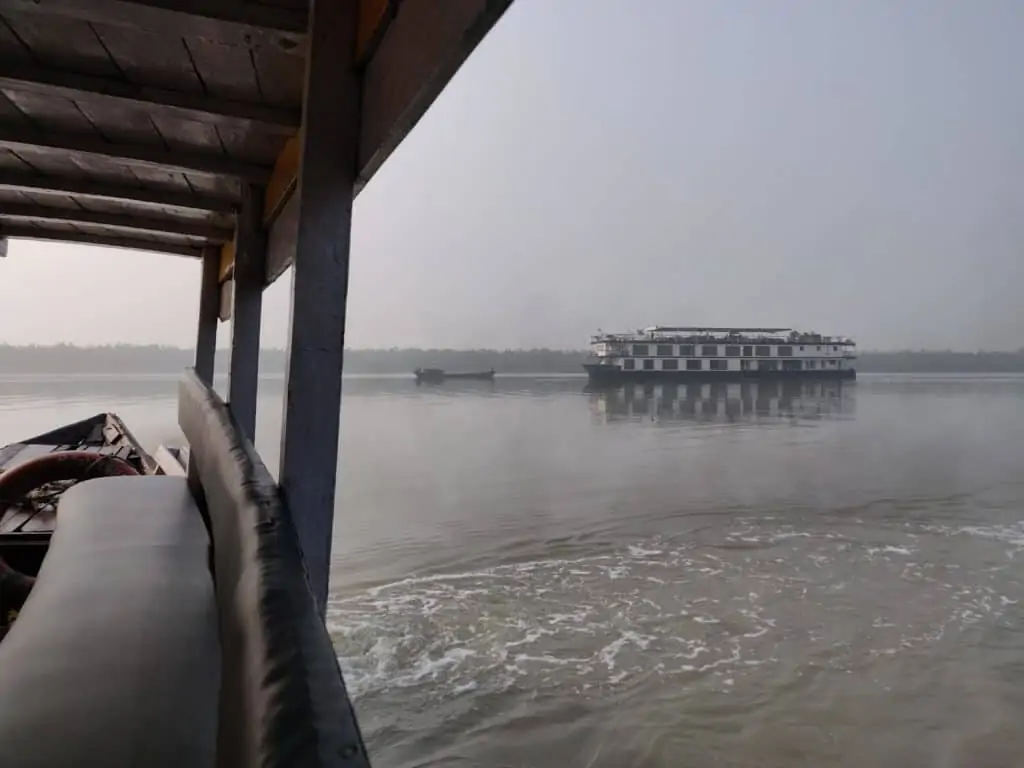
Our boat was a luxurious 3 storied river cruiser owned and managed by The Assam Bengal Navigation Company. The cabins were well appointed, the food, a well thought out balance between Indian and Continental to meet the diverse group of guests and the staff knowledgeable and oh so courteous.
Our group of 8 converged on the vessel for breakfast on a warm bright Thursday morning in Kolkata. Introductions to fellow travelers (3 sociable Brits) and key crew members were made. Ronit the man in charge set a favorable impression with his humor, attention to detail, safety and the overall concern with the environment that was sustained over the course of the trip.
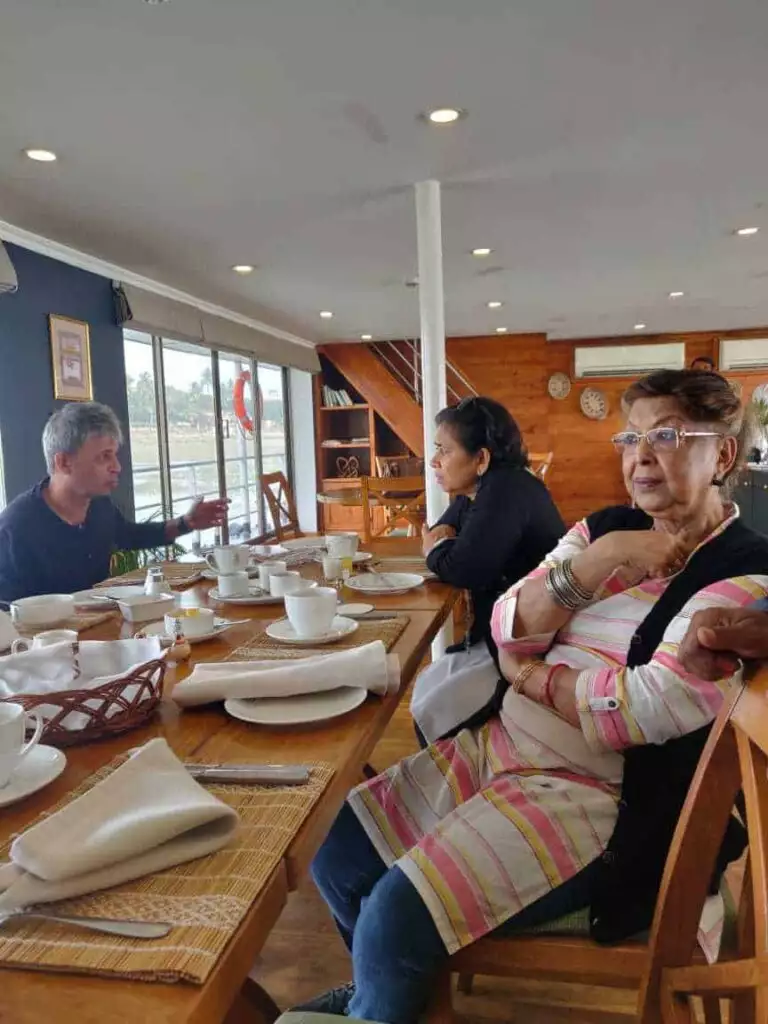
The first day was spent cruising down the Hooghly out of Kolkata. That journey can best be described as experiencing the timelessness of India. The fisherman laying nets in silty waters, children cannonballing into the river with gay abandon, orange hued fishing boats in sleepy riverside towns and the sound of that ubiquitous village radio. The Upper deck was perfectly set up to nod off in a deck chair in the warm sunshine, drift in and out of a reverie of your choosing, with your preferred choice of beverage until you were summoned to lunch, tea or dinner. At a bend in the Hooghly we passed Robert Kyd’s 270 acre Botanical Gardens and amongst the most famous herbariums. Historically famous for being established to identify and transport new plants of commercial value for the East India Company from the colonies. In a sense a less well known Kohinoor. Nevertheless modernity and development was always too visible and continued to knock, smokestacks from the refining plants at Haldia lined the banks at a distance and in the midst of this languidness, stark reminders of a world of machines and toil.

On board, the foreigners in the group learnt to wear Dhotis and Sarees with a libation at hand while I made a pig’s ear of tying a South Indian style dhoti. I learnt that day that the Bengali dhoti has a definitive edge on yardage compared to its South Indian cousin.
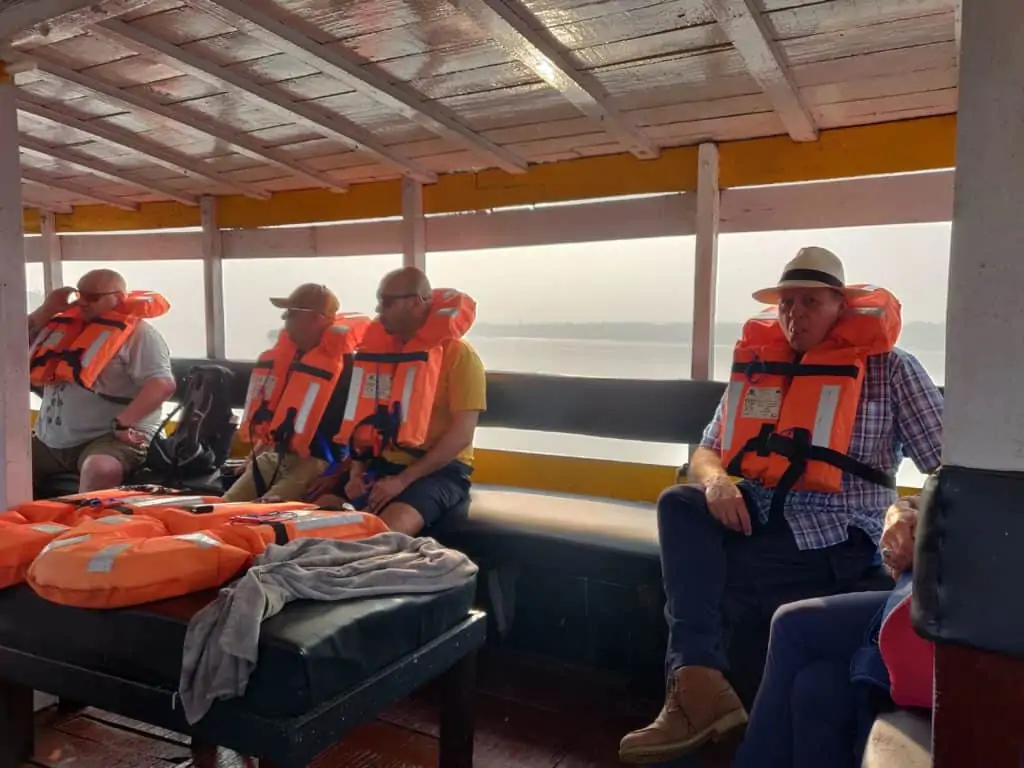
For our meals the crew had set a single long table with all the trimmings. Silverware, red and white wine glasses, served entrees et al. Conviviality and conversation was hence encouraged amongst the known and the unknown and topics ranged from the wonders of Assamese cooking to famous Rugby scrum halves. I don’t believe Covid was brought up once – perhaps it hadn’t even been named so at the time. The sunset was spectacular at the end of the Ganga at Sagar Island, the water swarming with dolphins that could be spotted for fleeting seconds as they surfaced and disappeared.
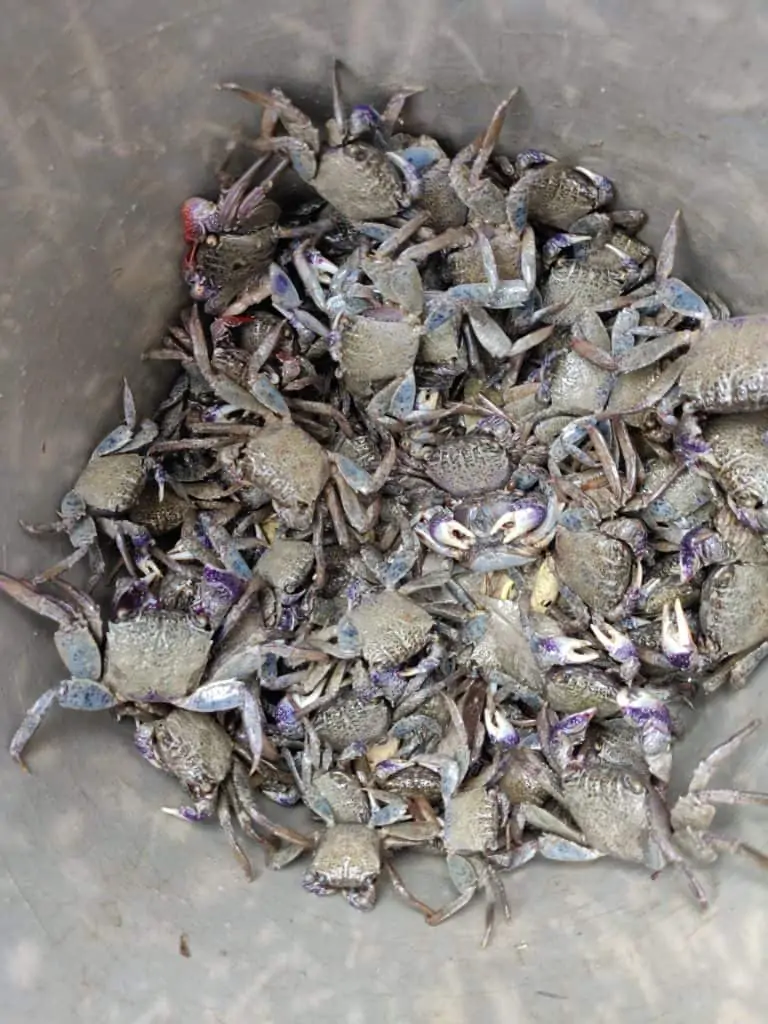
Early on the second morning we found ourselves moored on a misty stretch of water in the middle of the Mangroves. The boat with its short draft had meandered through the narrow inlets and canals between islands,that we learnt to identify as the typical topography of the Sunderbans, to reach broader patches of water. Life in The Sunderbans is governed by the tides and so too are the flora and fauna. Hermit crabs with glowing red claws scramble around at low tide and are soon lost to view with a rise in the water level along with the local crab fisherman. We took the ‘tender’, a ferry, to the shoreline for a short walk to a crocodile research park traversing a man made path through the mangroves. On our way in we saw a man seemingly unconscious in the middle of the path whom we tiptoed around but by the time we returned he seemed to have had made a ‘swiftish’ recovery and there was nary a trace of him. While the park itself seemed under attended and a tad derelict, the birdlife was varied and interesting and we spotted two large well camouflaged monitor lizards. The pick of that morning was the Brown winged Kingfisher which had the pinkest bird legs I have ever seen.
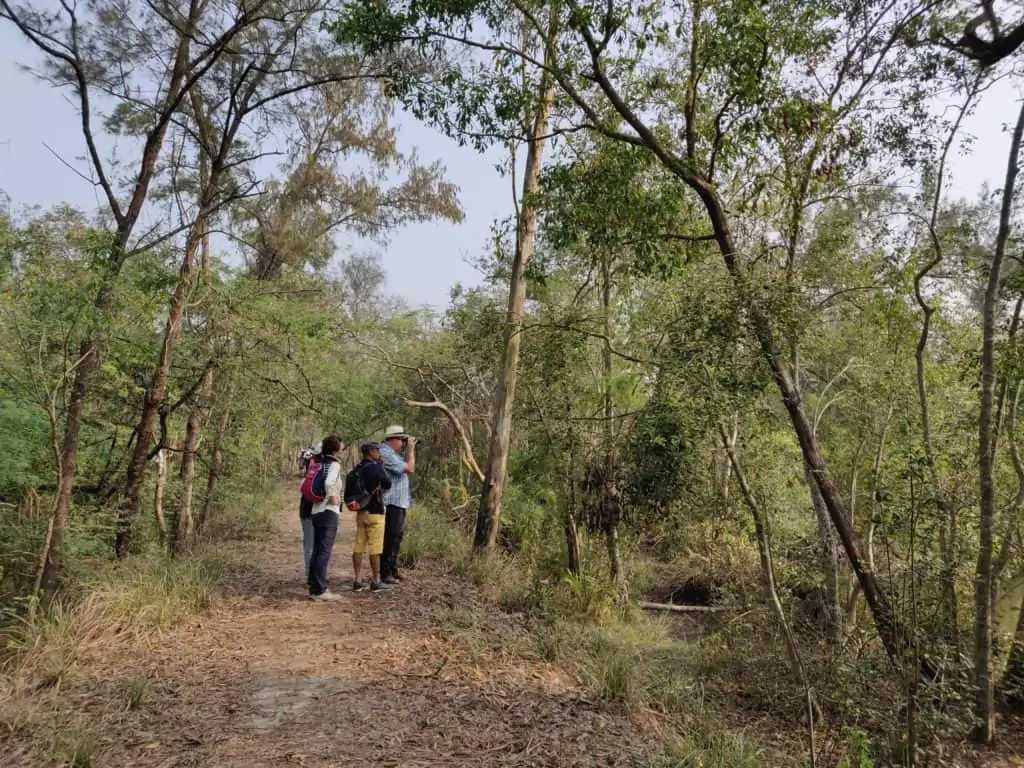
In the afternoon we saw the only two tigers we were destined to see – in a rehabilitation centre swarming with tourists. Nevertheless they were in good condition, magnificent in their orange glory and lissome grace. Our foreign friends, however, got the same attention as the tigers and I am convinced they now adorn the walls or screen savers of some local Bengali homes along with the rehabilitated cats. One interesting interlude – our ‘tender’ was beached thanks to the changing tide and had to be freed with a tow from a fellow boatman The rescue effort resulted in some minor damage to the prow, but the disorganized melee preceding the event with the masses all contributing to the idea generation effort was a scene that could only be out of our beloved subcontinent.

The third day had us up bright and early for our tour of the Sunderbans sanctuary. While the sanctuary is divided into the buffer zone, reserve forest and core area, tourist trips are allowed only into a section of the reserve forest. The local boat arranged for the trip was rustic but our crew were on board to serve lunch and refreshments. The day long trip felt a trifle long given the paucity of game to be spotted. The tide was low in the morning and rather a lot of muddy bank was on view, the forest itself being way above eye level. The boats are allowed on established routes and our guide, a very loud soul, and accomplished photographer tried to keep us interested with sightings of pug marks, crocodiles and monitor lizards. But sightings are restricted to what you can see on the bank and hence there was little to be spotted particularly if you are used to the largesse of the other national parks in the country. My simple theory is that there are so many maneaters in that region due largely to the fact that the tiger has limited prey and man must be amongst the easiest to catch. Birdspotting was more promising, the varieties of Kingfishers on offer was quite stunning and we were lucky to spot the green billed Malkoha along with a sprinkling of herons, storks and shoreline plovers and curlews. Tourist facilities are very limited and likely very underfunded, but thankfully we had our ‘cruise liner’ to go back to, with the cold towels and welcome drinks.
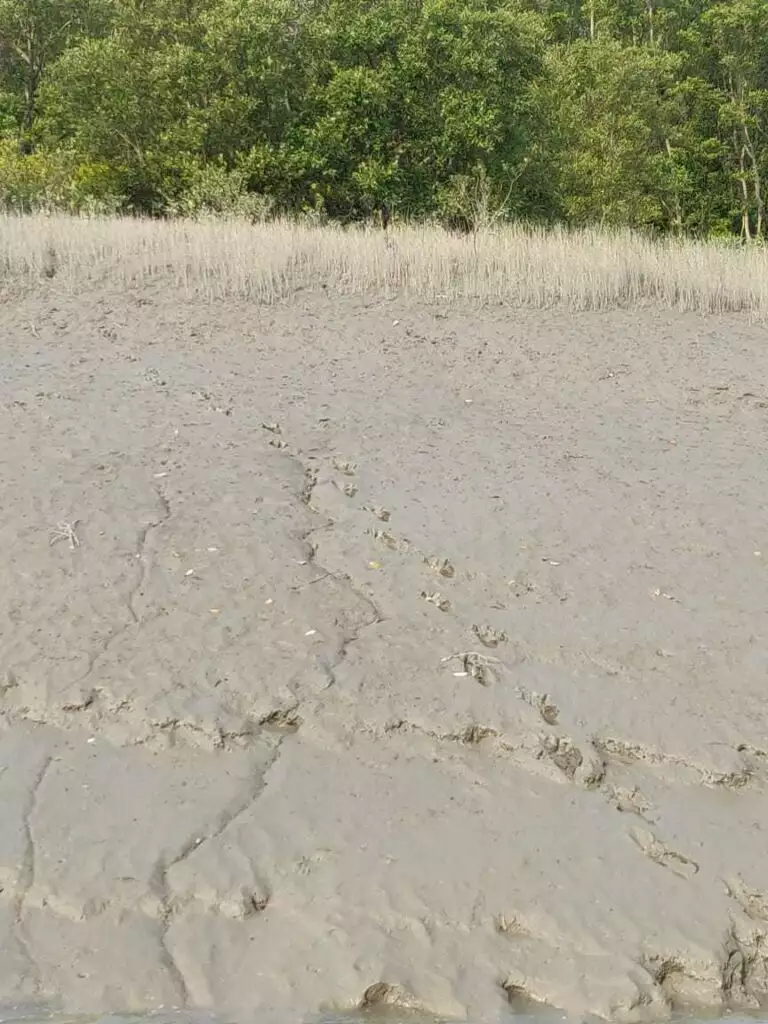
On the boat later that night a visiting village dance troupe performed for us. It was eminently interesting that the folklore, religious beliefs, and deities of the area are so intrinsically linked to the tiger. The dances to the tales of Bono Bibi and the protection she provides to the fisherfolk from storms and tigers were an endearing end to a day that gave us a glimpse into the lives, culture and environment of the local people.
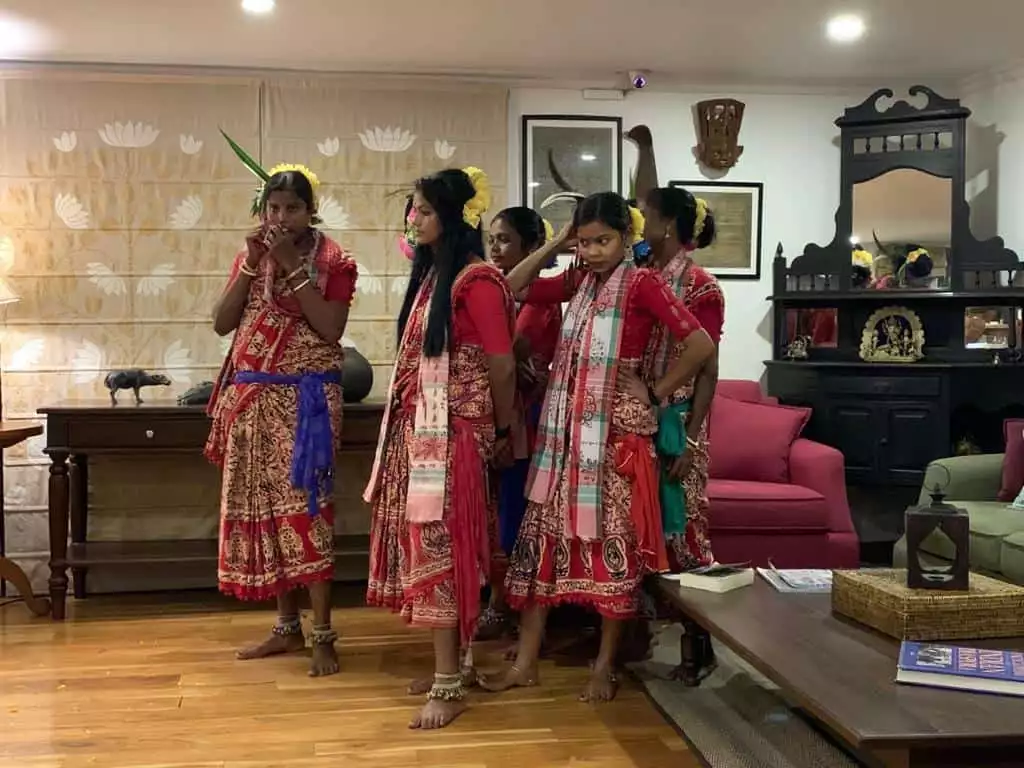
On our last day we walked a village. Its been a while since I did that. I came away thinking so much of the country has changed and so much hasn’t. The poor farmers and fisherfolk still live lives of hope. Hope that it rains enough, that there are no cyclones that leave lasting impacts on their livelihoods, that no child gets bitten by a snake in the next flood, that there is enough food for the next meal – reflecting now I believe we are really too privileged to complain about lockdowns.
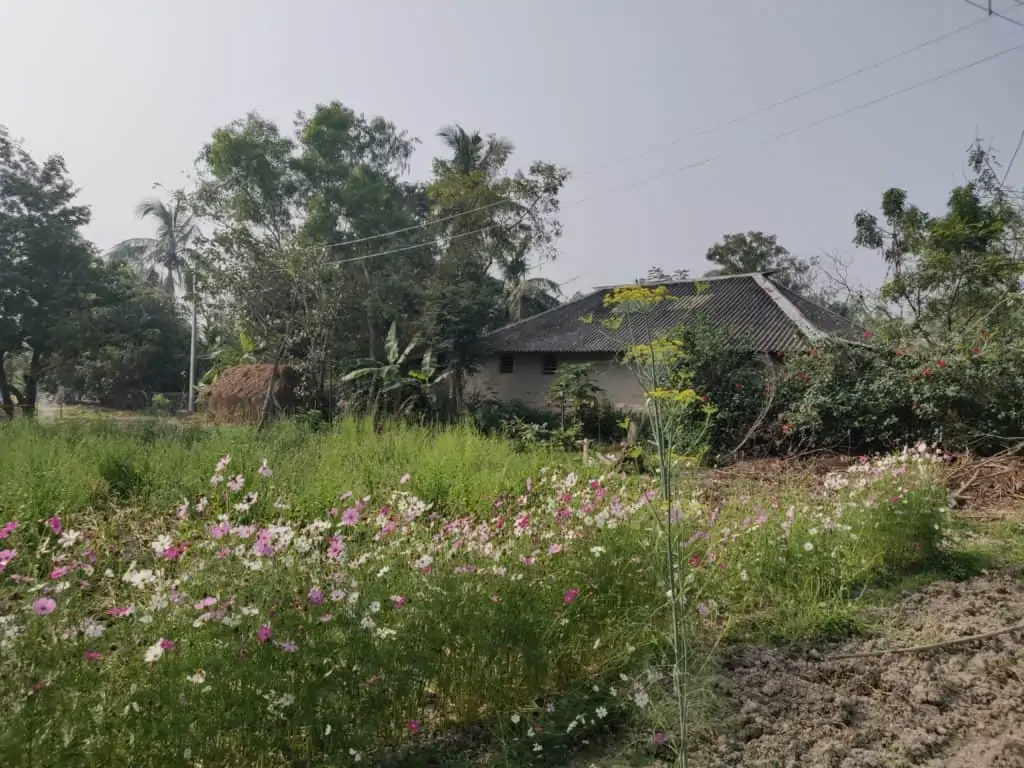
So sitting here today I wonder when we can travel again – perhaps on the new route into Bangladesh with the delightful ABN Company crew. They did an outstanding job on the trip and to me the high point was the luxurious comfort of the boat, the team onboard and the memory of sliding gently through all that timelessness.
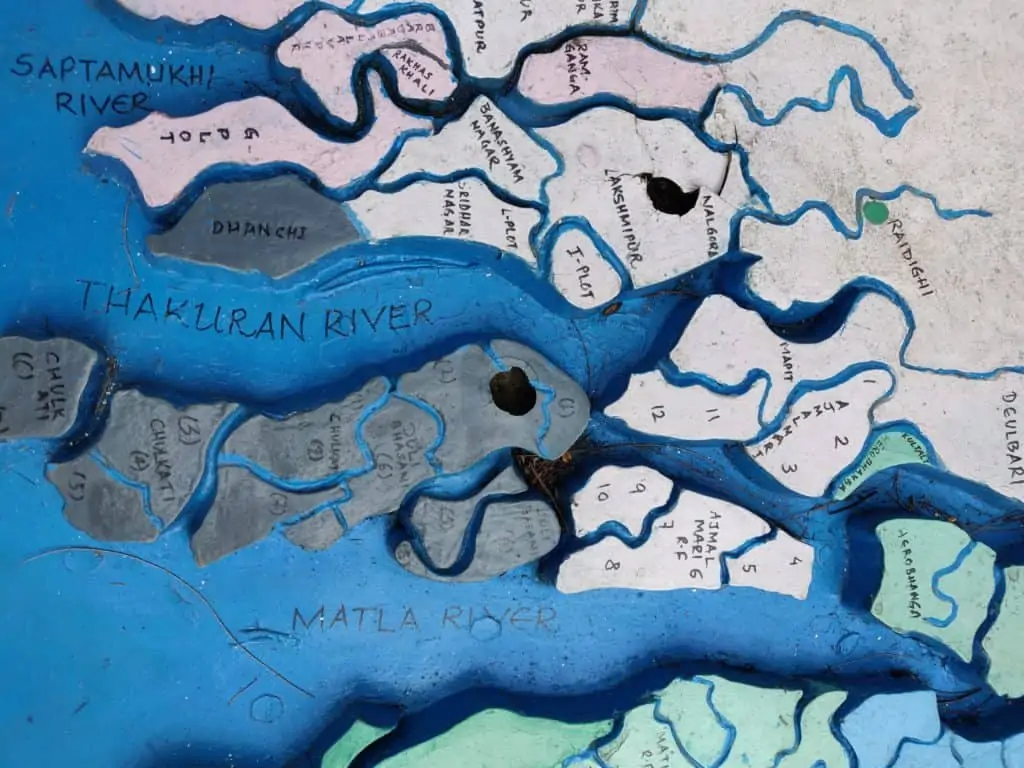
Post Script:
The Sunderbans has been blighted by Amphan since I wrote this. While I can only hope that no major misfortune has befallen the people and the villages we visited, I suspect that is unlikely to be the case. Nevertheless, dealing with natural calamity is ingrained into the psyche of the region; they will mend their houses, sail their boats, plant their crops and get on with their lives.”
Article is written by Arvind Palaniappan. Images belong to Curtain Call Adventures.


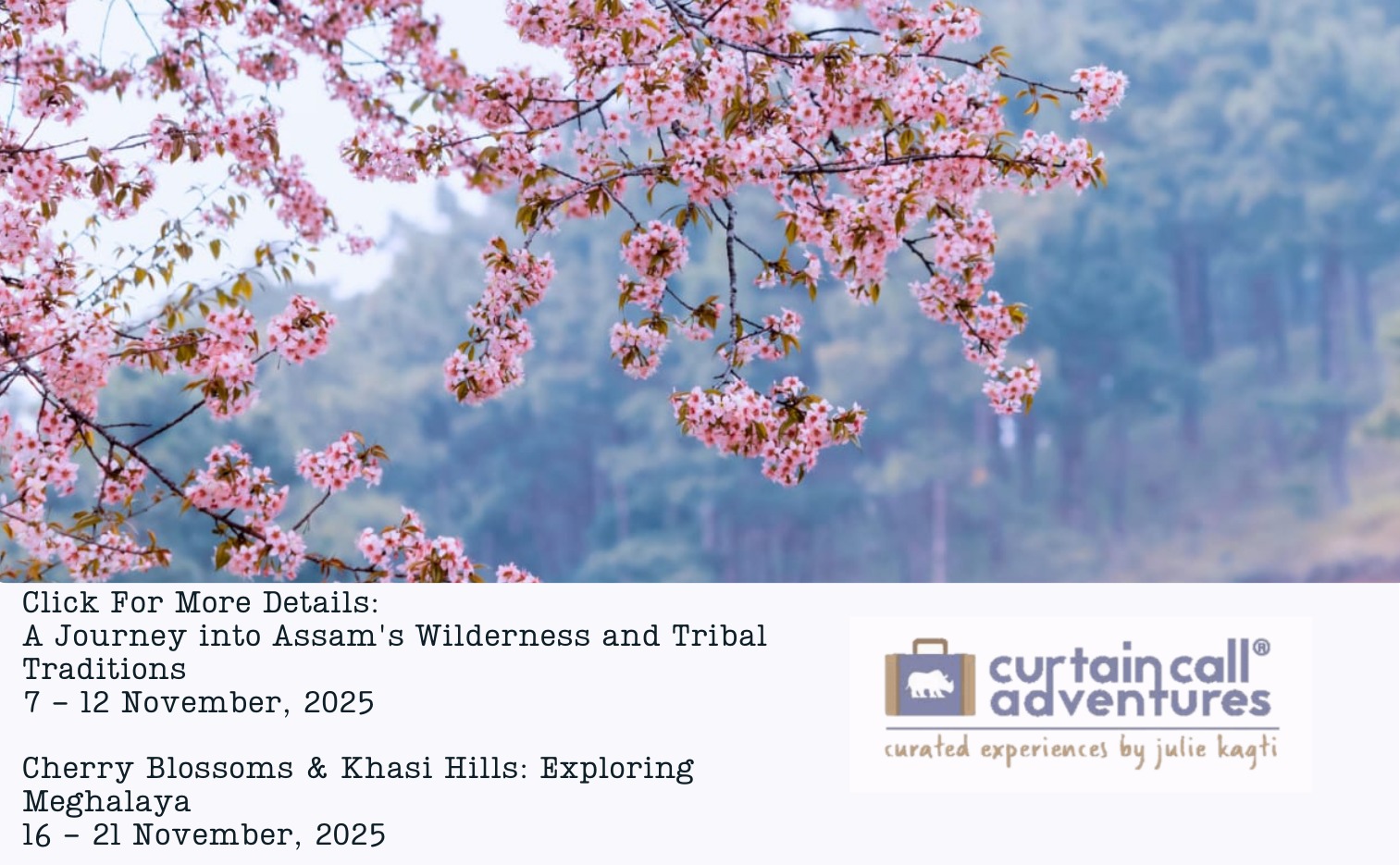
2 Responses
Wonderful. A true Keep Sake.
Thank a lot.
Thank you for your feedback